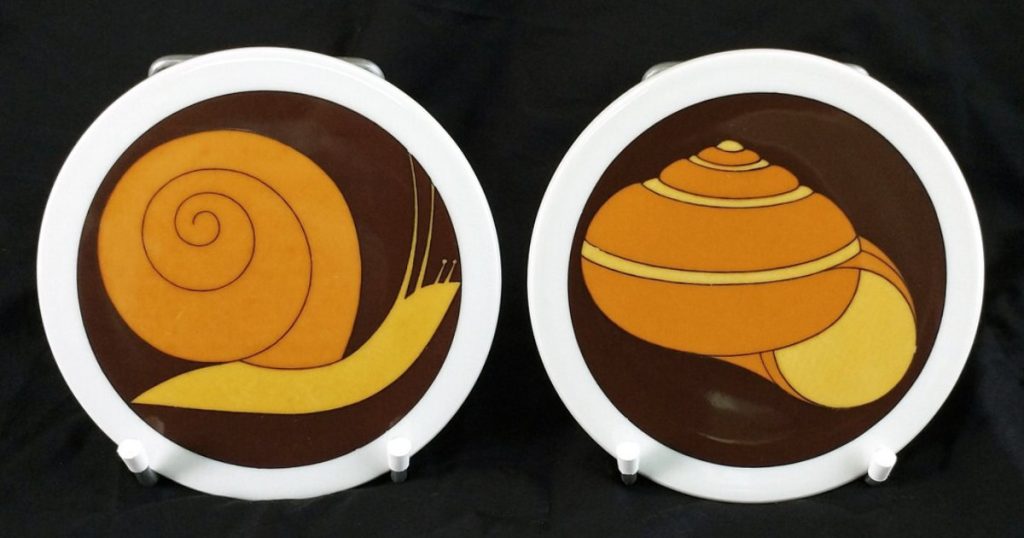
Bing & Grøndahl
The Danish Porcelain that Charmed the World
For over 150 years, Bing & Grøndahl has been creating some of the most beautiful and enchanting porcelain products that have delighted and fascinated vintage and retro pottery lovers from Denmark and the Nordic countries, as well as the rest of the world. Bing & Grøndahl was founded in 1853 by a sculptor and two art dealers, and since then it has produced some of the most exquisite and charming porcelain products, such as the Christmas plates, the figurines and the blue fluted dinnerware. In this article, we will explore the history, the products and the appeal of Bing & Grøndahl, and why it is a treasure trove for collectors and enthusiasts of Danish porcelain.
History
Bing & Grøndahl was founded on 15 April 1853 by Frederik Vilhelm Grøndahl, who was a figurine maker for the Royal Danish Porcelain Factory, and Meyer Hermann Bing and Jacob Herman Bing, who were art and book dealers. The factory was located on the corner of Vesterbrogade and Rahbek Allé in the Vesterbro area, at that time outside the city of Copenhagen, Denmark. The trademark backstamp for Bing & Grøndahl porcelains is the three towers derived from the Coat of Arms of Copenhagen.
The founders had a vision to create high-quality porcelain products that combined artistic expression and technical innovation. They hired some of the best artists and designers of their time, such as Lauritz Jensen, Hans Tegner, Arnold Krog, Jens Peter Dahl-Jensen and Svend Jespersen. They also experimented with different techniques and materials, such as underglaze painting, stoneware, faience and porcelain biscuit.
One of the most remarkable achievements of Bing & Grøndahl was the creation of the first Christmas plate in 1895. The idea came from Harald Bing, one of Meyer’s sons who took over the management of the company in 1884. He commissioned Swedish artist Frans August Hallin to design a plate with a motif of a snow-covered landscape with a church. The plate was an instant success and started a tradition that continues to this day. Every year since 1895, Bing & Grøndahl has issued a new Christmas plate with a different motif related to Christmas or winter.
Another milestone in the history of Bing & Grøndahl was the collaboration with Royal Copenhagen in 1987. The two companies decided to join forces to face the challenges of the global market and to share their resources and expertise. They formed a new company called Royal Copenhagen A/S, but they maintained their separate brands and trademarks. In 2003, however, they merged into one brand under the name Royal Copenhagen.
Products
Bing & Grøndahl has produced a wide range of porcelain products over its 150-year history, but some of them stand out for their popularity and beauty. Here are some of the most iconic products of Bing & Grøndahl:
- Christmas plates: As mentioned before, these are annual plates with motifs related to Christmas or winter. They are highly collectible and sought-after by porcelain lovers around the world. Some of the most famous motifs include “Behind The Frozen Window” (1897), “Jule After” (1908), “Arrival Of Christmas Guests” (1922), “Christmas In Greenland” (1972) and “The Little Mermaid” (1990).
- Figurines: These are porcelain sculptures of animals, people or scenes from fairy tales or everyday life. They are known for their realistic details, expressive poses and delicate colors. Some of the most famous figurines include “The Shepherdess And The Chimney Sweep” (1911), “Polar Bear” (1912), “Girl With Calf” (1937), “Boy With Umbrella” (1942) and “Love Refused” (1956).
- Blue fluted dinnerware: This is a classic dinnerware set with a blue floral pattern on a white background. It was inspired by the Chinese porcelain that was imported to Europe in the 18th century. It was first produced by Royal Copenhagen in 1775, but Bing & Grøndahl acquired the rights to produce it in 1884. It is one of the most recognizable and elegant dinnerware sets in the world.
Appeal
Bing & Grøndahl has a unique appeal to vintage and retro pottery lovers for several reasons. First of all, it represents the style, quality and craftsmanship of Danish porcelain, which is renowned for its simplicity, elegance and functionality. Second, it reflects the culture and tradition of Denmark and the Nordic countries, which are known for their cozy atmosphere, festive spirit and natural beauty. Third, it offers a variety of products that suit different tastes and preferences, from the classic blue fluted dinnerware to the whimsical figurines to the nostalgic Christmas plates. Fourth, it has a history and a legacy that spans over a century and a half, and that connects generations of porcelain lovers and collectors. Fifth, it is a part of the Royal Copenhagen brand, which is one of the most prestigious and respected porcelain manufacturers in the world.
Bing & Grøndahl is more than just porcelain. It is a piece of art, a piece of history and a piece of Denmark. It is a treasure trove for vintage and retro pottery lovers who appreciate the charm and beauty of Danish porcelain. If you are one of them, you will surely find something that will captivate your heart and enrich your collection.
